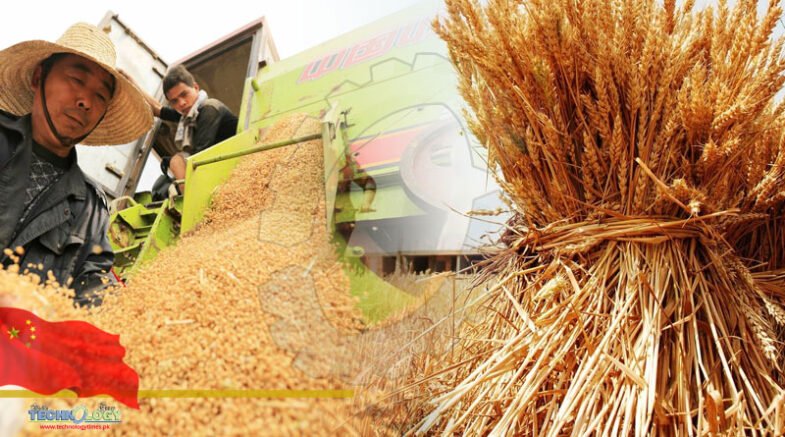Last year, China’s per capita grain supply was 483 kilograms, much higher than the international food security standard of 400 kg.

Last year, China’s per capita grain supply was 483 kilograms, much higher than the international food security standard of 400 kg. That has helped lay the foundation for the country to make remarkable achievements in stabilizing macroeconomic development, meet the needs of the people, and respond to international turbulence.
Over the past decade, China, with nearly one-fifth of the world’s population, has effectively prevented and resisted all kinds of risks and challenges by keeping a firm grip on its food security.
With the continuous improvement of the mechanism for maintaining per capita grain supply and stability, the main contradiction of grain supply has changed from food shortage to imbalanced structure. So at present, optimizing the grain structure and improving the quality of grain have become the focuses for the nation’s efforts related to food security.
Since last five years, the transformation of China’s agricultural development mode has accelerated, and the development of resource-saving and environmentally friendly agriculture has been expedited.
The country has carried out a series of policies and measures, such as the pilot program of crop rotation and fallowing, the zero-growth program of fertilizers and pesticides, and the black soil protection program, which have effectively promoted the optimization of the per capita grain supply structure in a sustainable direction.
China has also markedly improved the quality of its grain. In 2021, the grain quality and safety inspection and monitoring system covered more than 60 percent of the major grain producing counties, those with more than 50,000 tons of grain output every year.
Based on the grain market demand, the country has constantly adjusted its grain production structure by giving full play to the decisive role of the market in allocating resources, and promoting the continuous optimization of the crop variety structure and regional grain distribution.
The planting structure integrating grain, commercial crops and feed crops has been largely established, focusing on the development of the crop varieties that the market has a large demand for, such as strong gluten and weak gluten wheat, high-quality rice and soybean. Grassroots government departments have taken the initiative to guide farmers to plan the planting structure in advance by providing them with market information and agricultural science and technology.
Yet, China still needs to make more efforts in the following three aspects to ensure its food security: enlarging the area of high-standard farmland, extending the value chains of the grain industry and stabilizing grain circulation system and supply chains. In particular, the country should focus on strengthening the resilience and stability of the grain supply chain, and improving the grain market monitoring and early warning system and emergency response system. By relying on big data, cloud computing and other information technology platforms, China should take the initiative to deal with the uncertainties in grain circulation.
Originally published at China Daily
